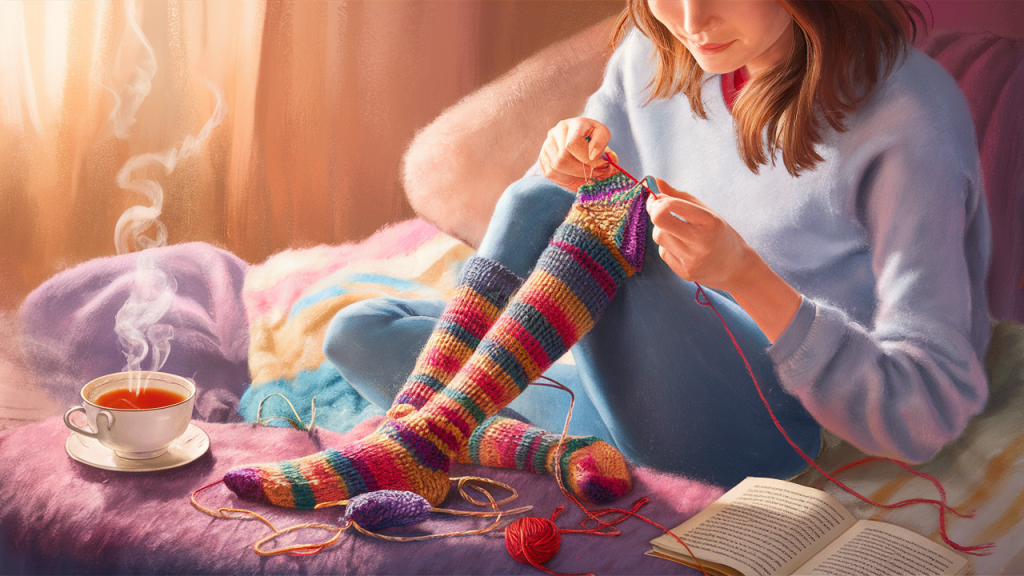Knitting socks is fun, but choosing the right needle size can be difficult. The size of your needles affects how your socks fit and feel.
If the needles are too big, the stitches will be loose, and the socks may not last long. If they are too small, the fabric will be too tight and uncomfortable.
The right needle size depends on your yarn and the kind of socks you want to make.
Most sock patterns use small needles because socks need a firm fabric that holds its shape. The most common sizes range from US 0 to US 3.
The yarn label and pattern usually suggest a needle size, but you may need to adjust it based on your knitting style. In this guide, I’ll explain how to choose the best needle size for your sock project.
Why Needle Size Matters in Sock Knitting
The needle size determines the tightness of your stitches. Socks need a firm, dense fabric to hold their shape and last through daily wear.
Loose stitches create gaps that cause socks to wear out quickly, while very tight stitches can make socks too stiff and uncomfortable.
The goal is to find a balance: snug enough for durability but flexible enough for comfort.
Needle size also affects:
- Fit: Small needles create tighter stitches, leading to a more fitted sock.
- Stretch: If the stitches are too tight, the sock may not stretch enough to fit properly.
- Durability: A dense fabric prevents holes from forming too quickly.
- Ease of knitting: Some knitters find small needles difficult to work with, while others prefer them for control.
Common Needle Sizes for Sock Knitting
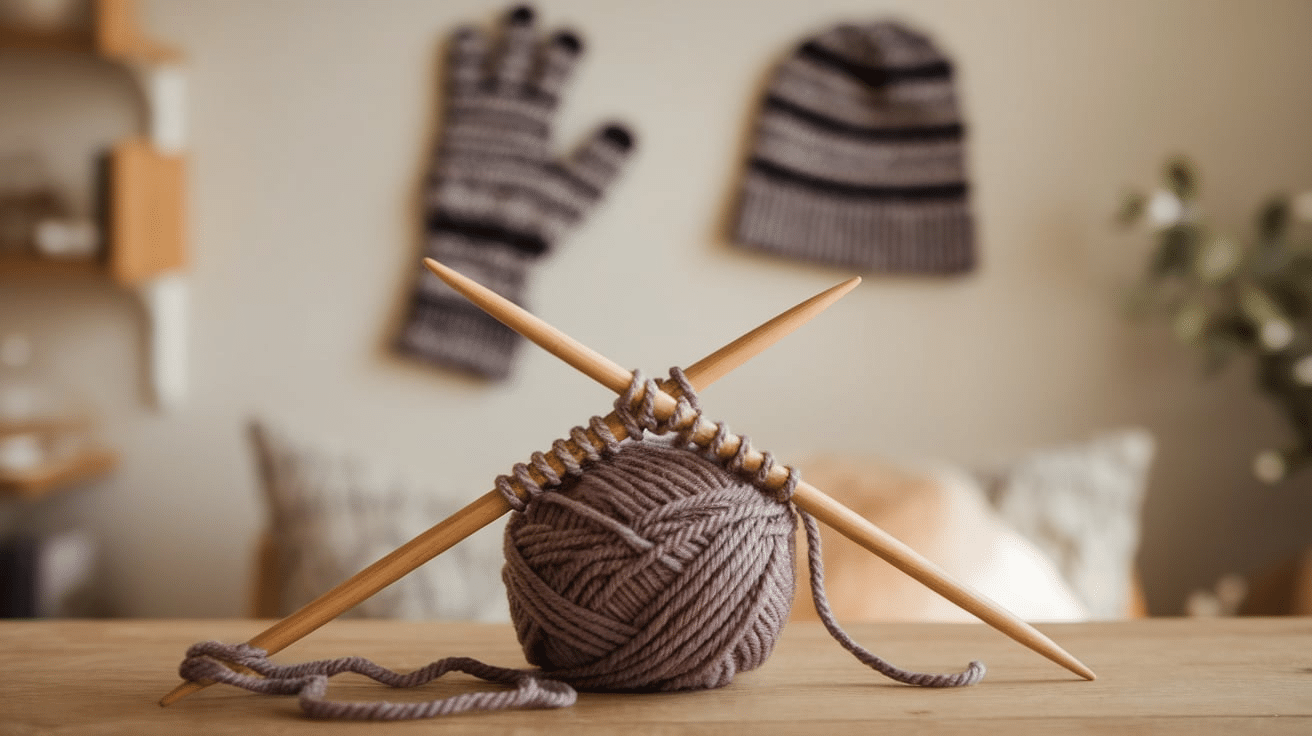
Most knitting patterns use small needles because socks need a tight, durable fabric. The most common needle sizes range from US 0 (2.0 mm) to US 3 (3.25 mm).
US 0 (2.0 mm)
- Creates a very tight fabric.
- Ideal for fine yarns or delicate socks.
- Good for knitters who tend to knit loosely.
US 1 (2.25 mm – 2.5 mm)
- The most popular size for sock knitting.
- Works well with standard fingering weight yarn.
- Provides a good balance between tightness and flexibility.
US 2 (2.75 mm)
- Suitable for slightly thicker fingering or sport-weight yarn.
- It creates a slightly looser fabric but still holds its shape well.
US 3 (3.25 mm)
- Best for sport or DK-weight yarn.
- Produces a softer, thicker sock fabric.
Most knitters start with US 1 or US 2 when working with fingering-weight yarn, which is the most common yarn choice for socks.
How to Choose the Right Needle Size for Socks
Picking the right needle size depends on a few factors:
1. Yarn Weight
The thickness of your yarn affects the needle size you need.
| Yarn Weight | Recommended Needle Size |
|---|---|
| Lace or Fingering | US 0 – US 2 (2.0 – 2.75 mm) |
| Sport Weight | US 2 – US 3 (2.75 – 3.25 mm) |
| DK Weight | US 3 – US 5 (3.25 – 3.75 mm) |
| Worsted Weight | US 5 – US 7 (3.75 – 4.5 mm) |
If unsure, check the yarn label—it usually suggests a needle size.
2. Pattern Recommendations
Always check the pattern for the recommended needle size. Designers test their patterns to find the best size, so it’s a good starting point.
3. Your Knitting Tension (Gauge)
Some knitters knit tightly, while others knit loosely. If your stitches are too loose, go down a needle size. If they are too tight, go up a size.
A gauge swatch can help you check if your stitches match the pattern’s recommended stitch count.
Types of Knitting Needles for Socks
There are different ways to knit socks, and the type of needles you use depends on your method.
1. Double-pointed Needles (DPNs)
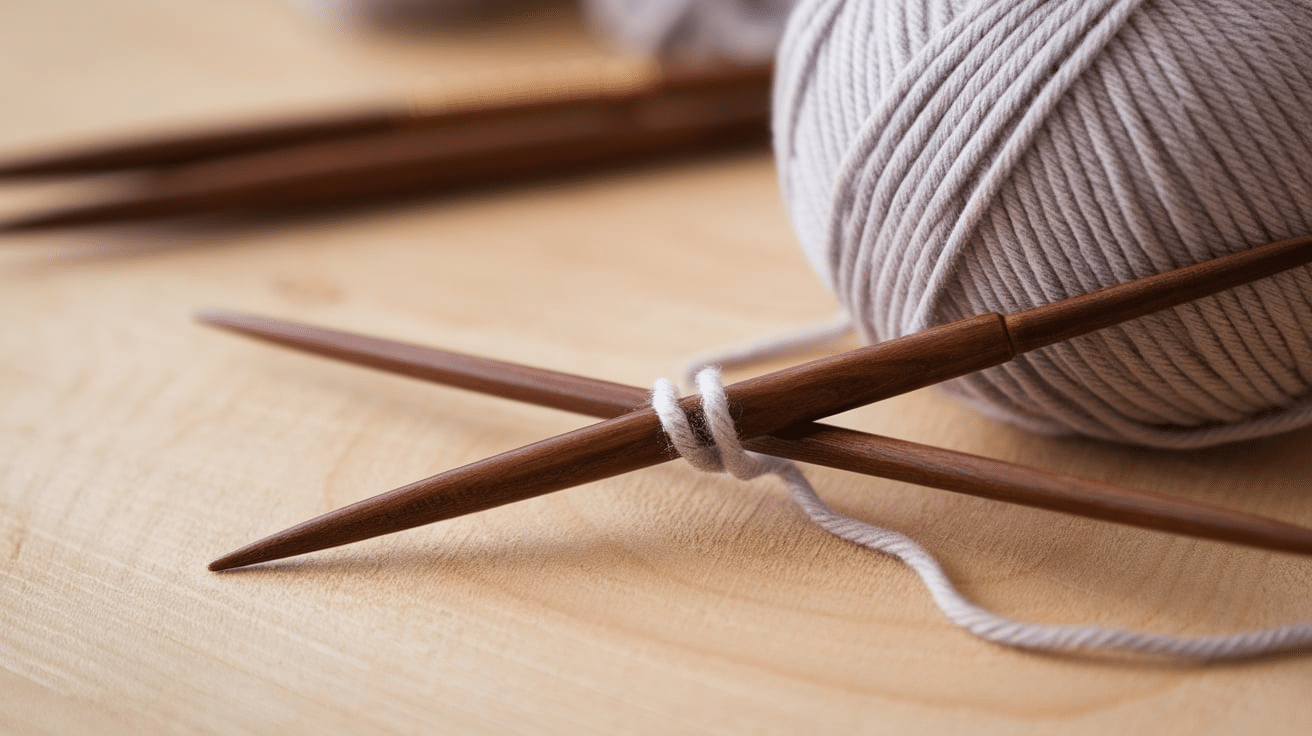
- Set of five short needles
- Great for knitting in the round
- Commonly used for sock knitting
2. Circular Needles (Magic Loop Method)
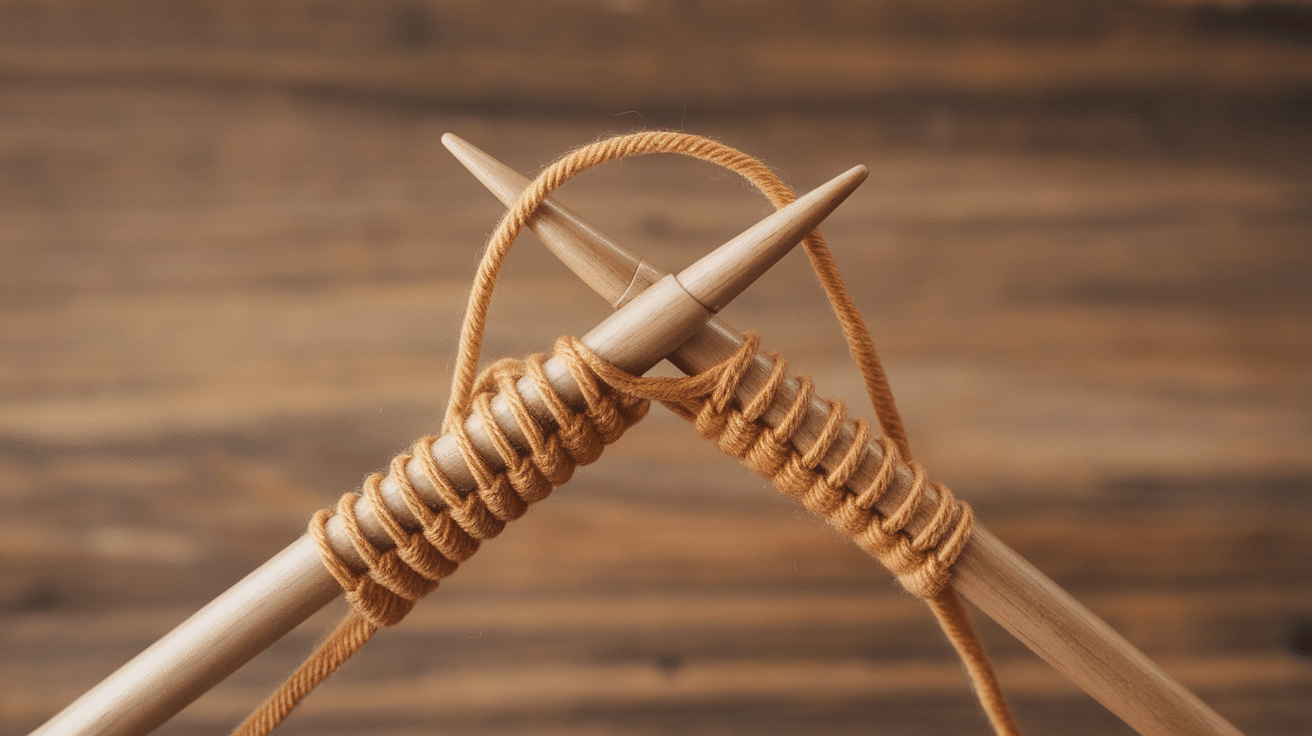
- One long circular needle
- Good for knitting two socks at a time
- Less risk of losing needles
3. Short Circular Needles
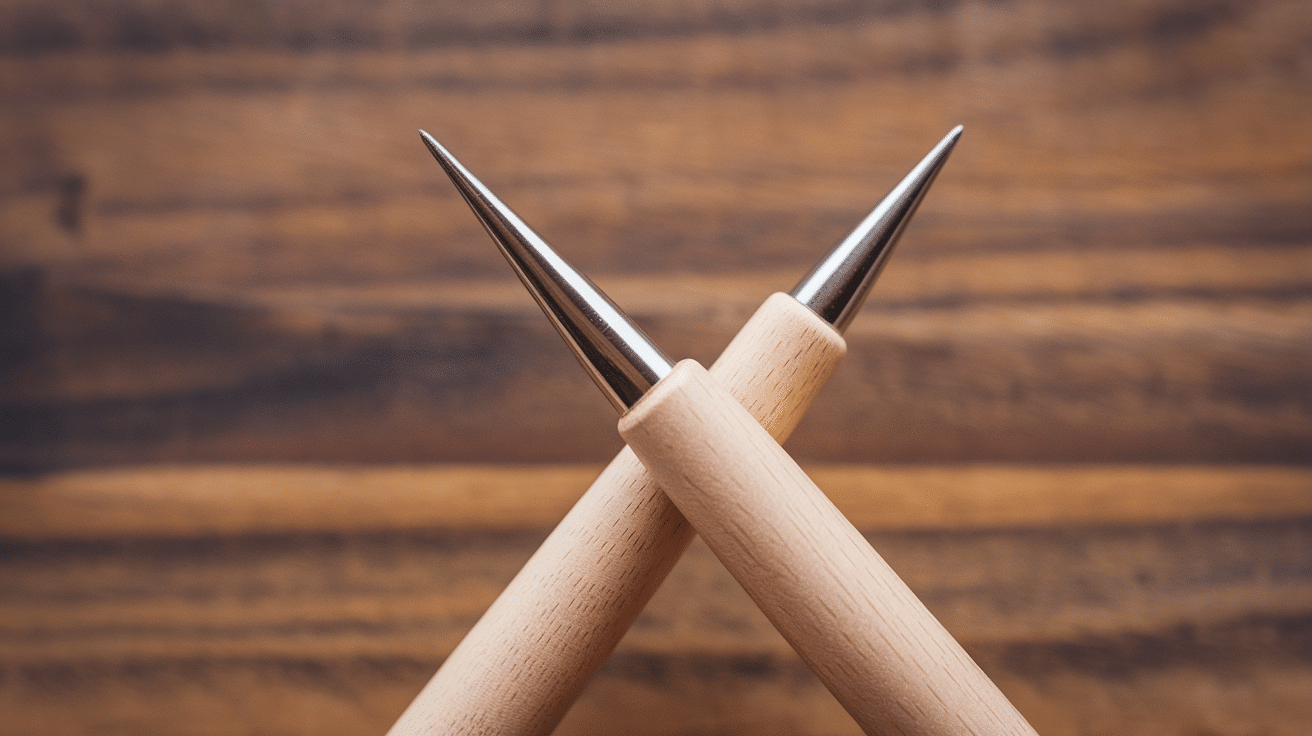
- Usually, 9-inch circular needles
- Great for knitting socks without changing needles
- It can be tricky for small hands
Most knitters prefer DPNs or the Magic Loop method for socks.
Knitting with Different Needle Materials
Needles come in different materials, and the type you choose can change how your socks feel while knitting.
1. Metal Needles
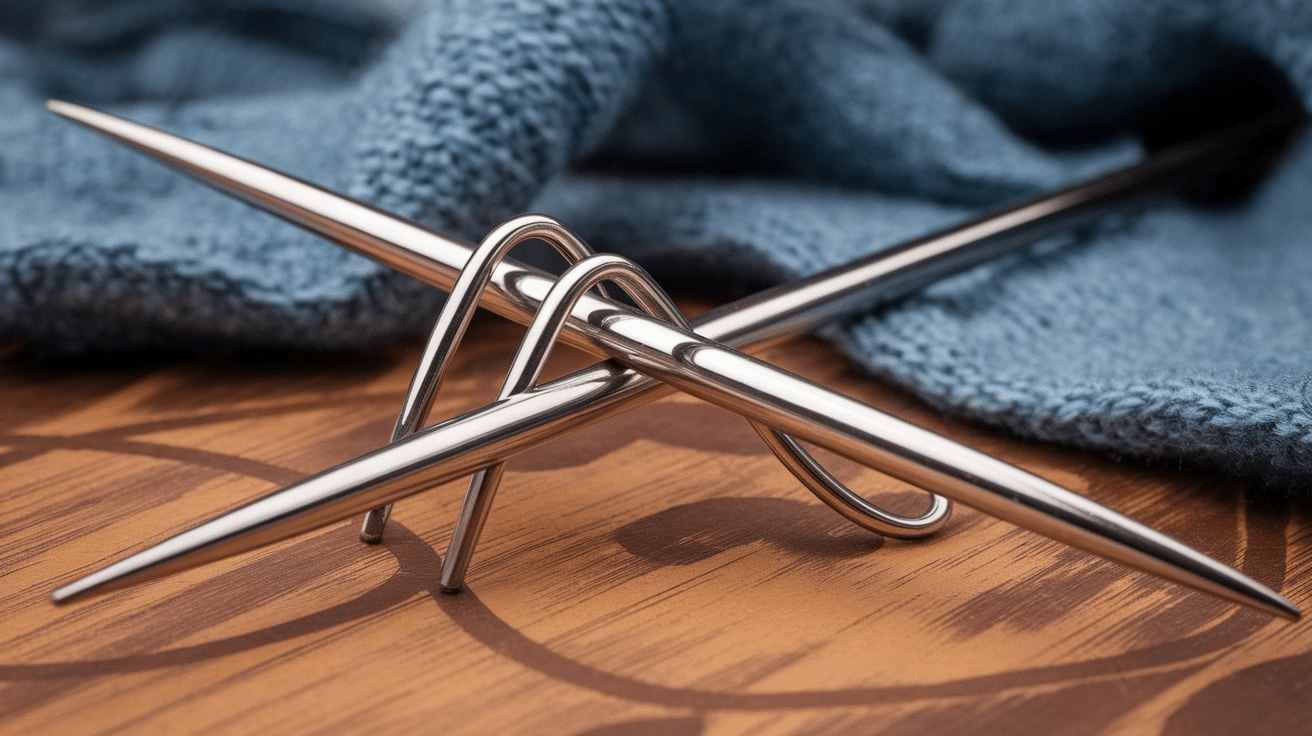
- Smooth and fast to knit with
- Good for tight knitters
- It can be slippery for beginners
2. Wood or Bamboo Needles
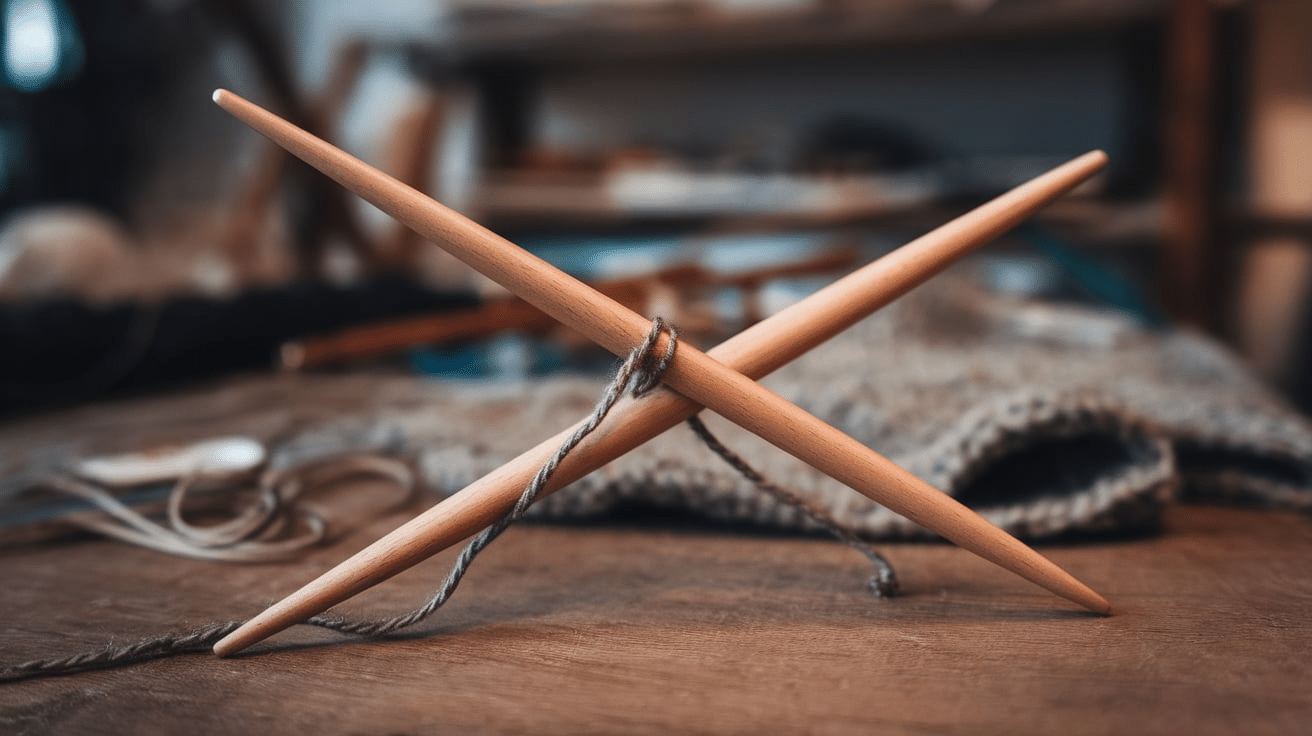
- It is slower but provides more grip
- Great for loose knitters
- Feel warm in the hands
3. Plastic Needles

- Lightweight and flexible
- It is not as common for sock-knitting
Many sock knitters prefer metal or wood needles because they provide a smooth knitting experience.
How to Test Your Needle Size with a Gauge Swatch
A gauge swatch helps you find out if your needle size is right.
- Cast on about 30 stitches using the yarn and needles you plan to use.
- Knit in the round (since socks are worked in the round).
- Measure the number of stitches per inch after knitting a few inches.
- Compare your stitch count to the pattern’s recommended gauge.
- If you have too many stitches per inch, go up a needle size.
- If you have too few stitches per inch, go down a size.
Tips for Knitting Socks with the Right Needle Size
Some extra tips to help you:
- Start with US 1 or US 2 needles if you’re unsure.
- Use a smaller needle for the ribbing to make the cuff snug.
- Check your gauge before starting to avoid size issues.
- Stick with a needle type you feel comfortable with.
Troubleshooting Common Sock Knitting Issues
Sometimes, even with the right needle size, problems can happen.
1. Socks Are Too Loose
- Try using a smaller needle size.
- Use a different yarn with less stretch.
2. Socks Are Too Tight
- Go up a needle size.
- Knit more loosely.
3. Holes in the Fabric
- Make sure your tension is even.
- Use a smaller needle to tighten the stitches.
Best Needle Brands for Sock Knitting
There are many good needle brands. Some of the favorites among sock knitters are:
- ChiaoGoo: Great for Magic Loop, smooth and durable.
- HiyaHiya: Sharp tips, good for detailed work.
- Knit Picks: Budget-friendly and good quality.
- Addi Turbo: Fast and smooth, great for speed knitters.
- Clover Bamboo: Good for beginners and has more grip.
Conclusion
Choosing the right needle size for sock knitting makes a big difference. It affects how the socks fit, feel, and last over time. If the stitches are too loose, the socks may wear out quickly. If they are too tight, they might feel stiff and uncomfortable.
Most sock patterns use US 1 (2.25 mm) or US 2 (2.75 mm) needles with fingering-weight yarn. Sport or DK-weight yarns need slightly larger needles.
Checking your gauge before starting helps you avoid sizing issues. If your stitches are too loose, go down a needle size. If they are too tight, go up a size.
Needle material and type also matter. Some knitters prefer double-pointed needles, while others like circular needles for the Magic Loop method. Trying different options helps you find what works best.
Socks are fun to knit, and they turn out just right with the right needle size.
Frequently Asked Questions
What type of needles should I use for socks?
You can use double-pointed needles (DPNs), circular needles (Magic Loop method), or short circular needles. The best choice depends on your knitting style and comfort.
Do I need different needle sizes for the cuff, heel, and toe?
Some knitters use a smaller needle for the cuff to keep it snug. The heel and toe can be knit with the same size as the rest of the sock.
What should I do if my socks are too tight after knitting?
Try blocking them by soaking and gently stretching them into shape. If they are still too tight, use a larger needle size next time.
Are metal or wooden needles better for socks?
- Metal needles are smooth and fast, good for tight-knitters.
- Wooden or bamboo needles provide grip and are great for loose knitters.


